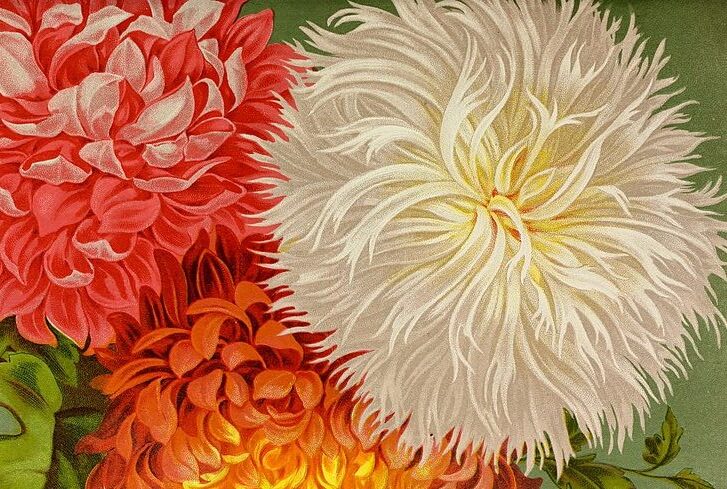
I wrote this post in 2019, and am still gobsmacked by flower hormones.
Last November, my mother gave me several crumpled paper bags full of flower bulbs for my birthday. Daffodils, hyacinths, snowdrops, paperwhites — the bulbs promised frilly, fragrant bounty and I couldn’t wait to plant them.
Then life got hectic. The bags sat in a corner for a week, then a month. By the time I opened the bags again, in early January, some of the bulbs were dusted with mildew. I’d lost the instructions for when to plant the different types of bulbs, and what bulb belonged to which type of flower. As I brushed the mold away, I contemplated how little I knew, not just about these flowers, but about flowers in general.
Understanding flowers is not trivial. Darwin referred to the awesome expansion of flowering plants during the late Cretaceous period as “the abominable mystery.” The ability to manipulate flowering has always been key to crop domestication, allowing humans to expand the range of rice, wheat, corn and other staples. Despite this, scientists only recently discovered how flowering works on a molecular level.
The story is surprisingly brutal, and begins with chrysanthemums. In the early 1930s, Russian plant physiologist Mikhail Chailakhyan was trying to figure out how plants sense light and dark, and decide when to flower. He shone light on different parts of chrysanthemum plants — the stem, the leaves — and found it was the leaves that sensed light. When leaves detect a certain daylength, the plant bursts into bloom, he discovered.
By then, scientists knew about hormones, signaling chemicals that travel through the bloodstream in animals. Hormones are molecules of transformation, controlling everything from the sprouting of hair to the thickening and thinning of the uterine lining. Chailakhyan proposed the existence of a hormone in plants that travels from leaf to stem and triggers flowering. He dubbed the hormone “florigen,” or “blossom-former.”
Chailakhyan performed experiment after experiment to prove that florigen exists. He transferred sap from the leaves of a flowering tobacco plant into the Chenopodium rubrum, or goosefoot plant, and showed that it induced the sprouting of tiny purple blossoms. A similar infusion in potato plants triggered the formation of tubers, he and his colleagues showed.
Chailakhyan ran into political trouble because his theories did not align with those of Soviet biologist Trofim Lysenko, a Marxist ideologue whose sham agricultural science led to famines that killed at least 7 million people. Although he was never completely expelled from academia, he was harrassed and demoted by Lysenko supporters until near the end of his career, when he finally got some Orders of Lenin and other honors from the international scientific community.
Chailakhyan never found florigen. The hunt continued until the mid-2000s, when scientists finally pinned down the molecule’s identity. William Lucas, a plant biologist at UC Davis, was among the first to discover florigen while working in a New Zealand greenhouse full of squash and pumpkin plants. By grafting Halloween pumpkins onto a mottled green-and-white squash called Curcurbita moschata, he and his colleagues showed that a protein called Flowering Locus T (FT) can travel from one plant to another and induce flowering. “Boom!” he says. “It makes flower after flower after flower.”
FT is produced in leaves and travels to a growing stem tip through a plant’s vascular system, the phloem. It works with another molecule to make stem cells switch from making leaves to making flowers, fruits and seeds. Today, scientists know that it regulates flowering in a vast assortment of plants, including trees. It also controls vernalization — the suppression of flowering in some plants until they’ve experienced a period of cold.
Florigen isn’t the only molecule that influences flowering. “There are more than 2,000 proteins in the blood of a plant,” and some are also hormones that could play a role, Lucas notes. Sugar levels, the age of the plant, and salt stress can all influence when a plant decides to pull the trigger. But FT plays a vital role in ensuring that flowering happens at the optimal time, maximizing seed production and dispersal.
In the decade or so since FT was identified, scientists have used the hormone to alter the timing of flowering in dozens of plants. Many are now using it to make crops more resilient to climate change. Lucas is now studying how flowers alter their gene expression to make a female flower instead of a male flower. “There’s a huge amount still there for us to understand,” he says.
In the meantime, I have been conducting my own haphazard experiment. I know several of the bulb species my mother gave me need to vernalize, so I’ve shoved half the bulbs in the refrigerator. The other half I’ve planted in pots, arranging some on the shady side of the house, others on a sunny porch. A few of the outdoor bulbs immediately sent up tender green shoots. Hurry up! I told the others. We’re in California, and I want daffodils. Then the practically unheard-of happened here: It snowed.
Thanks for the input, I imagined my hormonal bulbs saying last week, as they were buried in snow. But we can make decisions on our own.